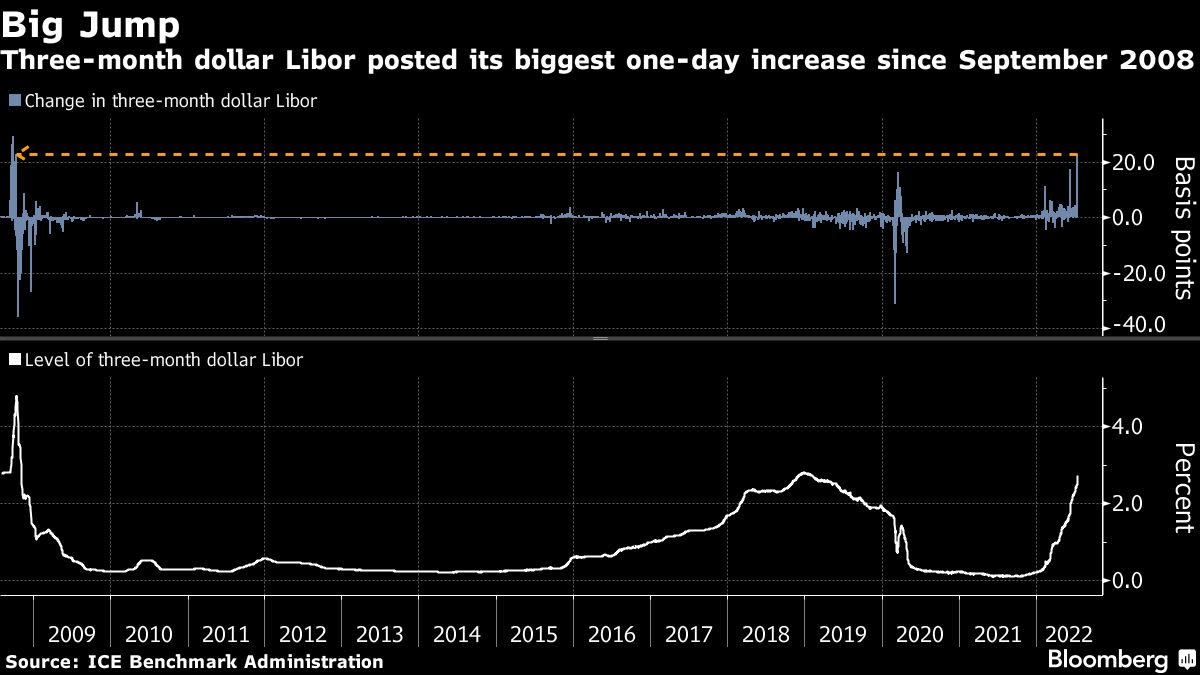[ad_1]
(Bloomberg) — The three-month London interbank offered rate for dollars notched its biggest increase since 2008, soaring to the highest level in more than three years as traders anticipate larger interest-rate hikes by the Federal Reserve.
Most Read from Bloomberg
Libor rose for the fourth straight session, jumping almost 23 basis points to 2.7403%, in the largest one-day increase since September 2008. The spread of Libor over overnight index swaps widened to roughly 12 basis points from minus 5.7 basis points the prior session.
The move follows hotter-than-expected inflation as measured by the US Consumer Price Index, which is fueling bets by traders that the Fed will implement an even bigger hike than June’s, which was the largest in decades.
Libor’s 2008 jump “was driven by credit-risk premium widening in interbank spreads, whereas this one is Libor playing catch up to OIS, which has jumped because of the hotter CPI print,” said Rishi Mishra, an analyst at Futures First.
Meanwhile, short-dated Treasury yields are rising anew, widening the gap between the two- and 10-year benchmarks. The two-year reached 3.22% Thursday while the normally higher 10-year yield declined to 2.91%. The inversion reappeared on July 5 and on Wednesday reached its most extreme level since 2000. It deepened further in Thursday trading to minus 27.6 basis points.
Another widely-watched yield spread, between the five- and 30-year tenors, narrowed to 1.5 basis points. Earlier this year it inverted by as much as 18.5 basis points.
Investors continue to anticipate front-loaded and aggressive Fed hikes to peak by year-end. Swaps are currently pricing 92 basis points of hikes into the July policy meeting and 211 basis points of additional hikes into the December Federal Open Market Committee Meeting, where the policy rate is expected to peak.
(Adds yield curve inversions in fifth and sixth paragraphs)
Most Read from Bloomberg Businessweek
©2022 Bloomberg L.P.
[ad_2]
Image and article originally from ca.finance.yahoo.com. Read the original article here.

